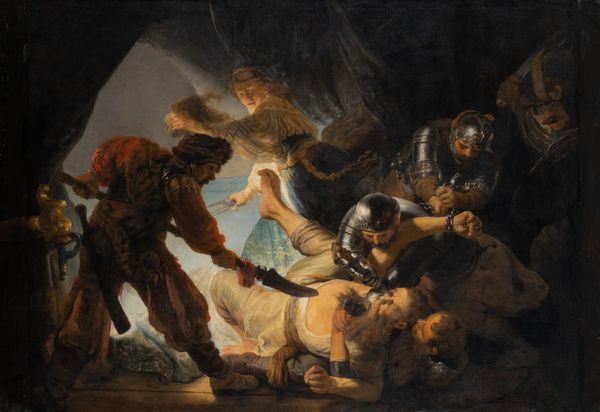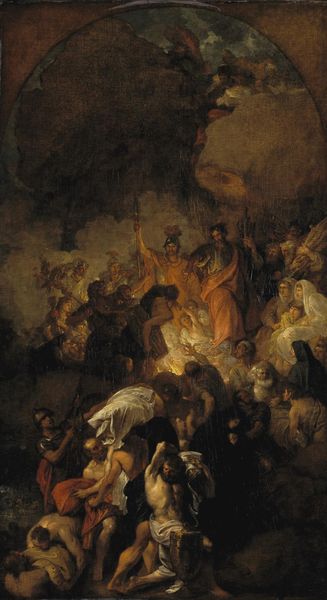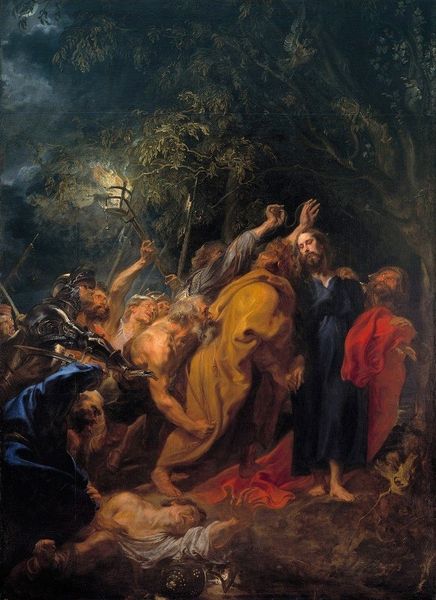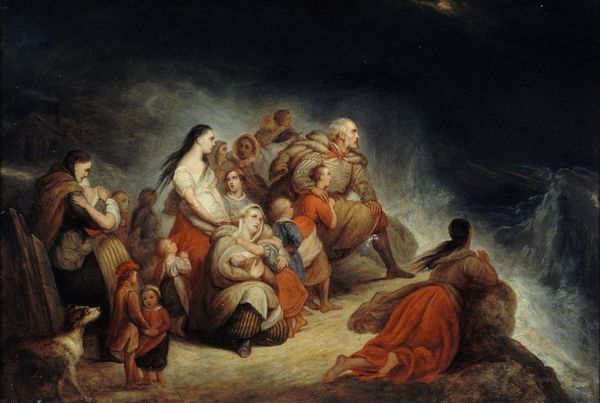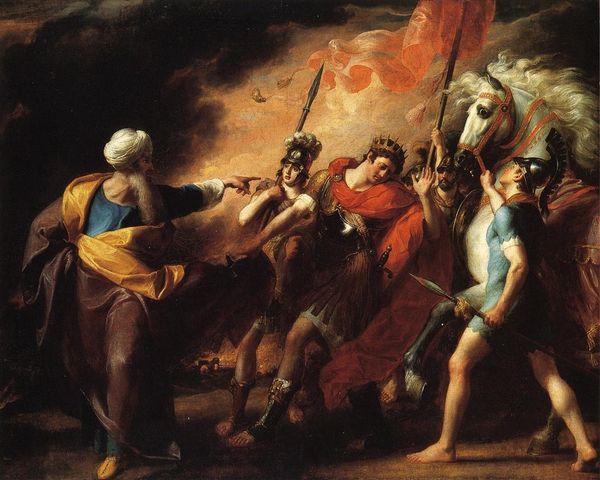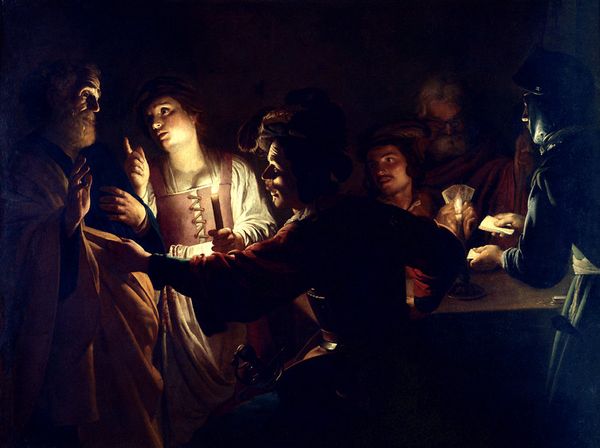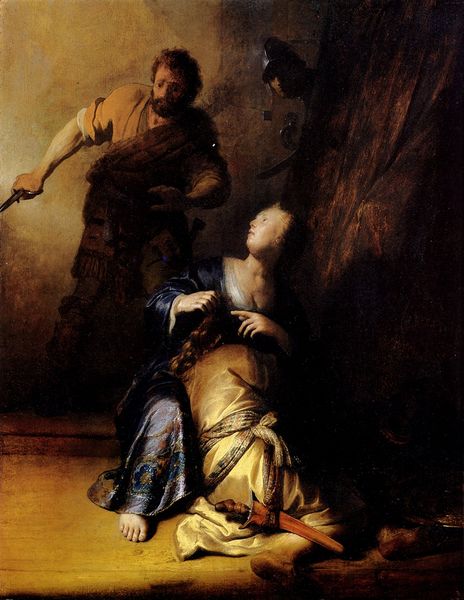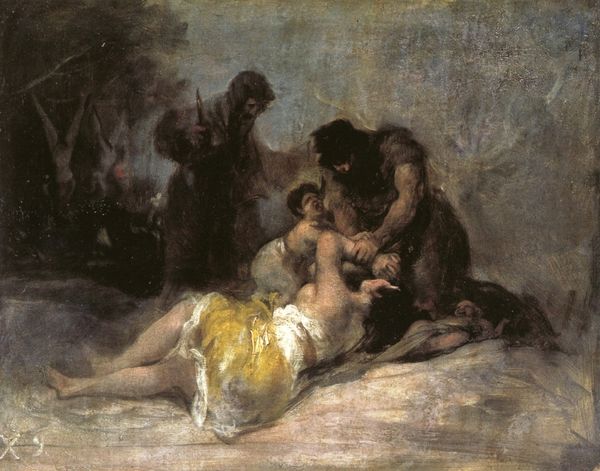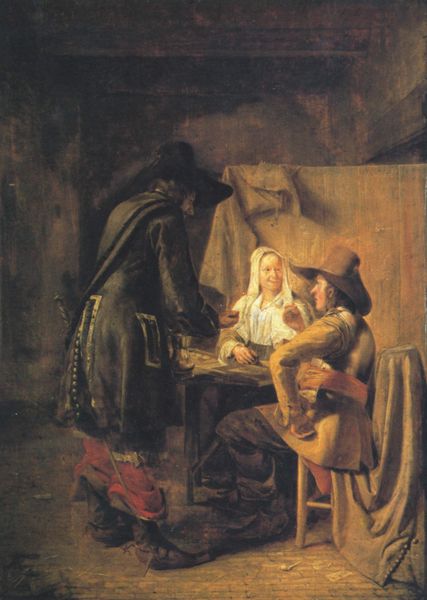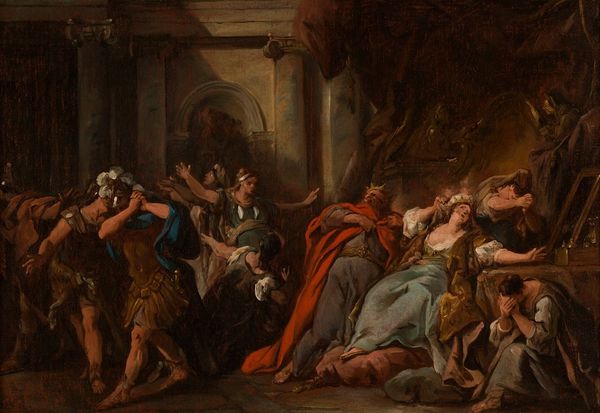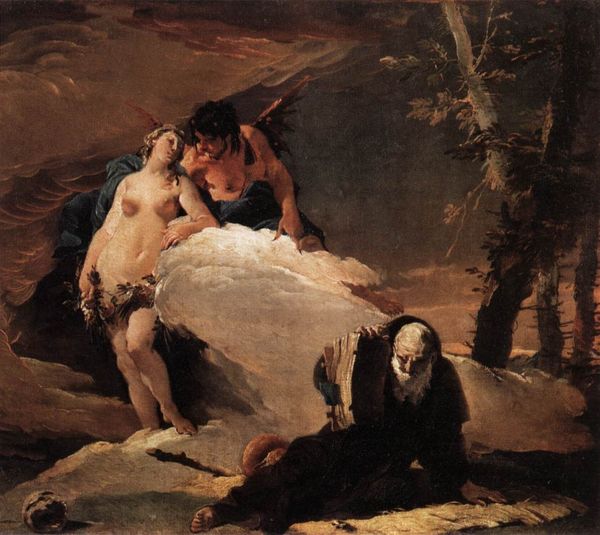
The Madonna of Carmel and the Souls in Purgatory 1730
0:00
0:00
giovannibattistatiepolo
Palazzo Brera, Milan, Italy
painting, oil-paint
#
portrait
#
narrative-art
#
baroque
#
painting
#
oil-paint
#
figuration
#
oil painting
#
chiaroscuro
#
christianity
#
human
#
history-painting
#
italian-renaissance
#
virgin-mary
#
angel
#
christ
Dimensions: 210 x 650 cm
Copyright: Public domain
Editor: Here we have Giovanni Battista Tiepolo's "The Madonna of Carmel and the Souls in Purgatory," an oil painting from around 1730. The strong contrast of light and shadow creates such a dramatic scene. What strikes you about its visual composition? Curator: Indeed. The masterful use of chiaroscuro is quite striking. Observe how the artist employs contrasting light not only to create drama, but to also direct the viewer’s gaze. The diagonal axis, formed by the figures ascending from the lower left towards the Madonna, dictates the narrative flow. What role do you believe color plays in defining the painting's structure? Editor: Well, the fiery tones at the bottom seem to draw my eyes downward, while the Madonna is in cool blues. So the limited color palette emphasizes that upward visual motion, like you said. Curator: Precisely. And notice how Tiepolo balances the composition with opposing masses—the tumultuous figures in the lower register counterpointed by the serene stability of the Madonna above. One might even argue that the limited colour palette serves a structural function, further articulating the formal tension between earthly suffering and divine grace. The angels almost appear sculptural, how might this add to the painting's impact? Editor: The figures seem even more three-dimensional and imposing because of that almost-sculptural quality! So focusing on how those techniques structure meaning changes the way I experience the artwork. Curator: Exactly! It encourages one to examine beyond representation. By understanding how Tiepolo orchestrated these formal elements, one can appreciate not only the subject matter but also his artistry. Editor: That gives me a whole new lens through which to understand baroque art!
Comments
No comments
Be the first to comment and join the conversation on the ultimate creative platform.

